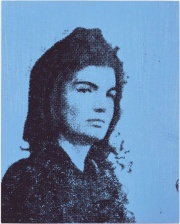Difference between revisions of "Silkscreen ink"
Jump to navigation
Jump to search
| Line 2: | Line 2: | ||
== Description == | == Description == | ||
| − | Typically a waterbased, non-toxic acrylic ink designed for screen printing on signs, posters, and fine art prints. several formulations are available for printing on various surfaces such as silk, synthetic fabrics, paper, plastic, leather or foil. One type of screen printing inks, called plastisol, ccontains a polymer base that is best that is best cured for 45 seconds at 320 F. | + | Typically a waterbased, non-toxic [[Acrylic resin|acrylic]] ink designed for screen printing on signs, posters, and fine art prints. several formulations are available for printing on various surfaces such as [[silk]], synthetic fabrics, [[paper]], [[plastic]], [[leather]] or [[foil]]. One type of screen printing inks, called [[plastisol]], ccontains a polymer base that is best that is best cured for 45 seconds at 320 F. |
| − | See also [ | + | See also [[screenprint]]. |
== Synonyms and Related terms == | == Synonyms and Related terms == | ||
Revision as of 12:16, 13 June 2020
Description
Typically a waterbased, non-toxic acrylic ink designed for screen printing on signs, posters, and fine art prints. several formulations are available for printing on various surfaces such as Silk, synthetic fabrics, Paper, Plastic, Leather or Foil. One type of screen printing inks, called Plastisol, ccontains a polymer base that is best that is best cured for 45 seconds at 320 F.
See also Screenprint.
Synonyms and Related terms
Plastisol inks
